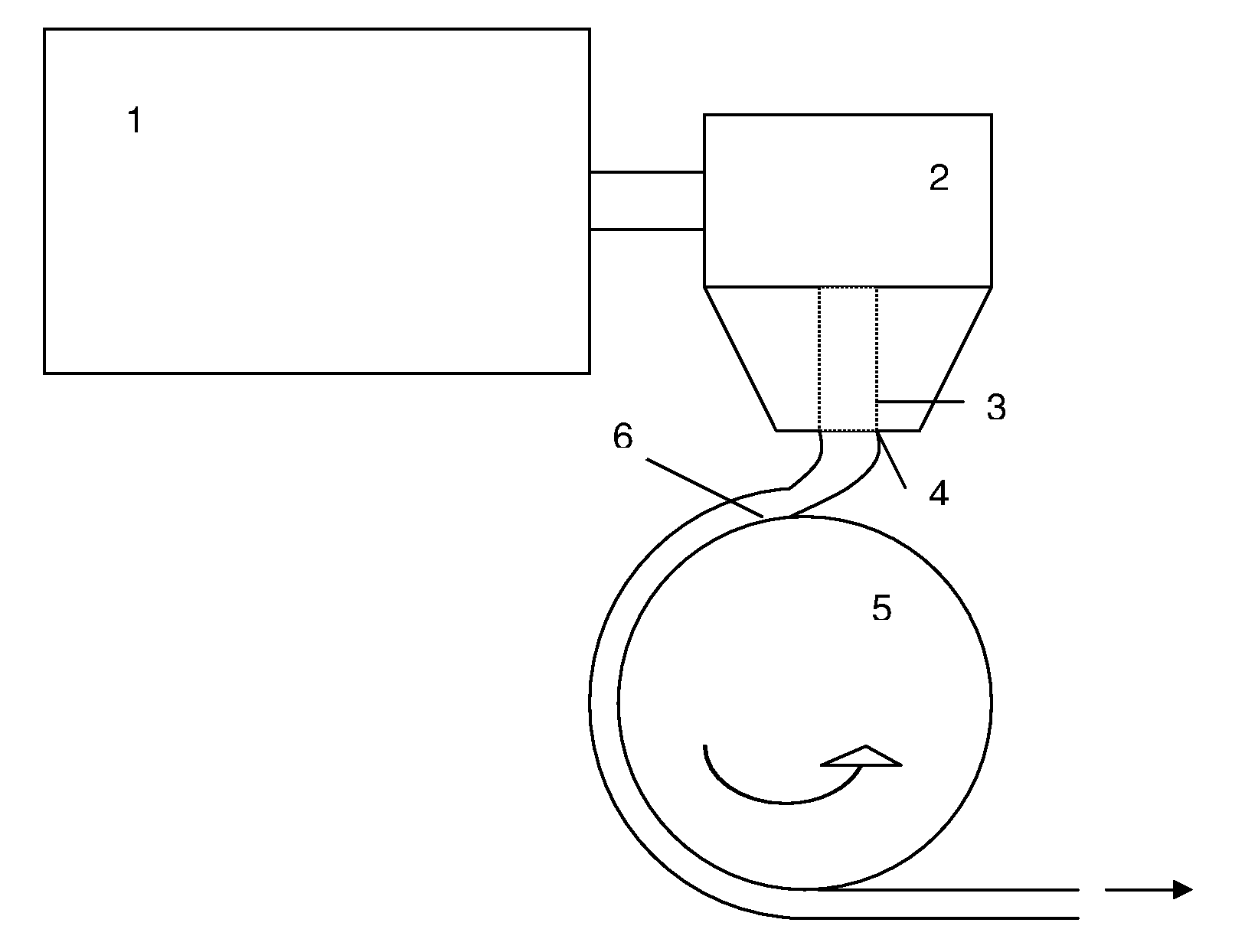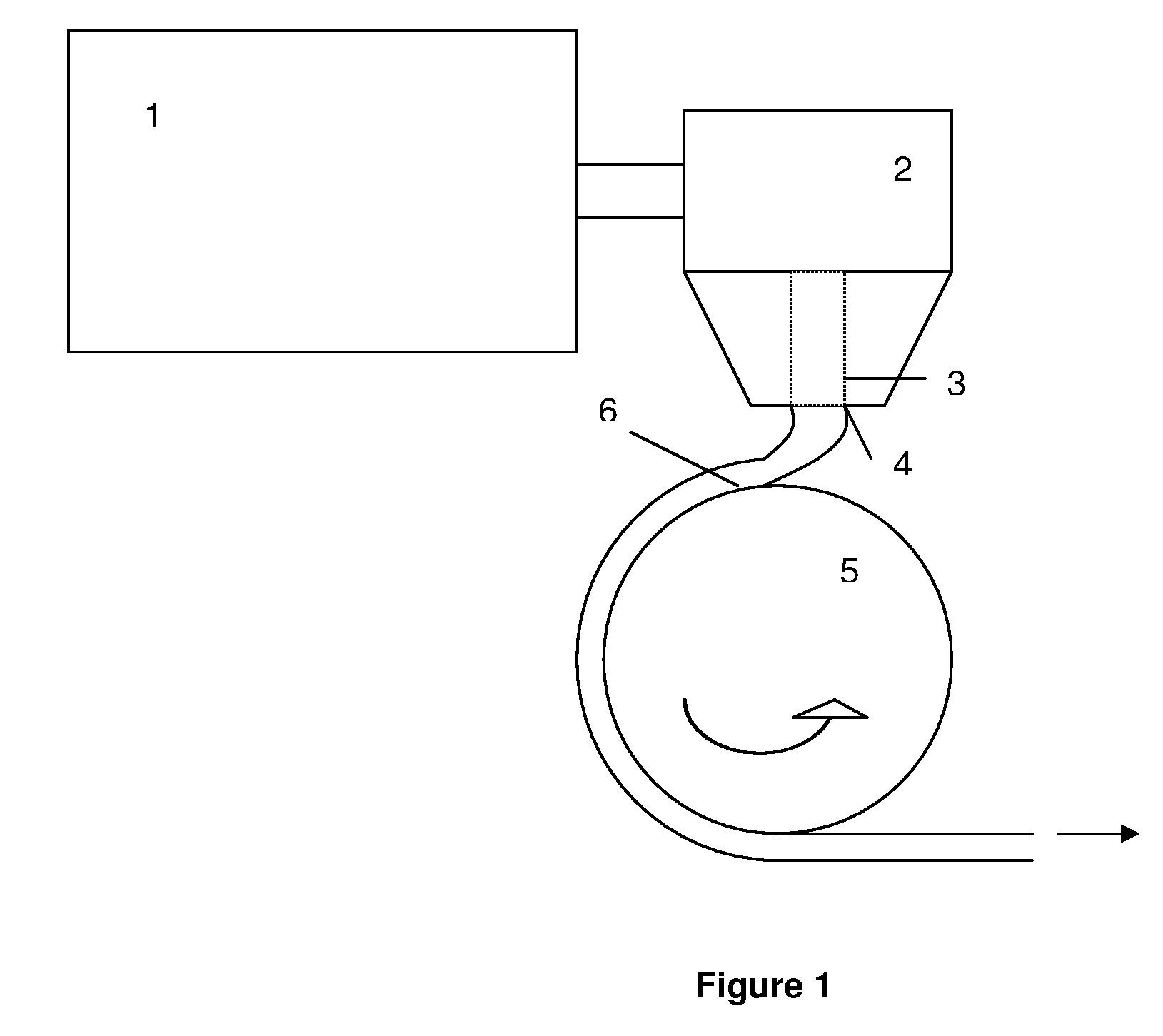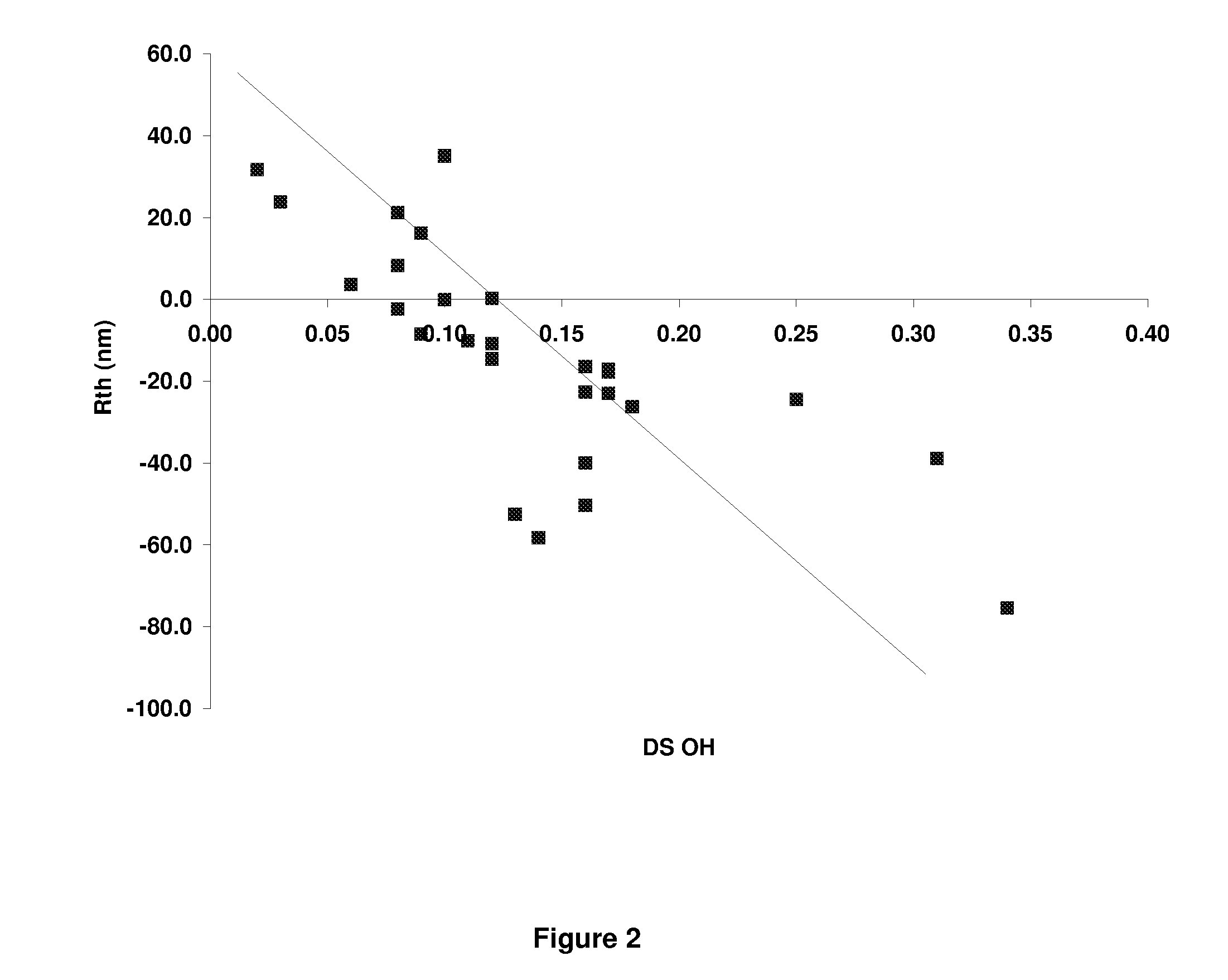Cellulose Ester Compositions Having Low Bifringence and Films Made Therefrom Comprising a Plasticizer
- Summary
- Abstract
- Description
- Claims
- Application Information
AI Technical Summary
Benefits of technology
Problems solved by technology
Method used
Image
Examples
example 1
Preparation of Cellulose Ester Compounds
[0225]Cellulose (75 g) was fluffed in a metal lab blender in three batches. This fluffed cellulose was treated in one of the following three pretreatments.
[0226]Pretreatment A: The fluffed cellulose was soaked in mixtures of acetic acid and propionic acid (amounts listed in Table 1 below. Then the reaction was carried out as shown below.
[0227]Pretreatment B: The fluffed cellulose was soaked in 1 liter of water for about 1 hour. The wet pulp was filtered and washed four times with acetic acid to yield acetic acid wet pulp (weight shown in Table 1 below) and the reaction carried out as shown below.
[0228]Pretreatment C: The fluffed cellulose was soaked in about 1 liter of water for about 1 hour. The wet pulp was filtered and washed four times with propionic acid to yield propionic acid wet pulp (weight shown in Table 1 below) and the reaction carried out as shown below.
[0229]Pretreatment D: The fluffed cellulose was soaked in about 1 liter of wat...
examples 8 through 21
Solvent Casting of Cellulose Acetate Propionates
[0234]Additional CAPs were made following procedures similar to Example 1, with the exception that different DS ranges of acetyl, propionyl and hydroxyl were produced. The different ranges of acetyl and propionyl were produced by changing the ratio of acetyl and propionyl species in the reaction mixture. The DS range of hydroxyl was changed by varying the time between the addition of the acetic acid water mixture and the addition of the magnesium acetate solution. Resin IV values for all of the samples ranged between about 0.8 and about 1.2. Films were cast from these materials and retardation values are shown in Table 3. It was observed that when the ratio of the propionyl DS to the hydroxyl DS (i.e. the “hydroxyl ratio”) was below 5, the Rth value became negative as the resin has high positive birefringence. Similarly, for values of the hydroxyl ratio between about 10 and 20, the film showed closer to zero retardation performance. Ab...
examples 22-34
Solvent Casting of Cellulose Acetate Butyrates (CABs)
[0237]A series of CABs were produced following the synthesis described in Example 1, but using butyric acid or anhydride in place of the propionic acid or propionic anhydride. Various DS ranges for acetyl, butyryl and hydroxyl were made and the retardation and DS data is listed in Table I. The trends in retardation are approximately the same with CAB as with CAP Tg's tend to be lower for CAB. As with the CAP samples, it was observed that when the ratio of the butyryl DS to the hydroxyl DS (i.e. the “hydroxyl ratio”) is below about 5, the Rth value becomes very large and negative. Similarly for Example 34 which had a hydroxyl ratio greater than 10, the retardation values begin to approach zero as the birefringence is decreasing.
PUM
| Property | Measurement | Unit |
|---|---|---|
| Percent by mass | aaaaa | aaaaa |
| Aliphatic | aaaaa | aaaaa |
Abstract
Description
Claims
Application Information
 Login to View More
Login to View More - R&D
- Intellectual Property
- Life Sciences
- Materials
- Tech Scout
- Unparalleled Data Quality
- Higher Quality Content
- 60% Fewer Hallucinations
Browse by: Latest US Patents, China's latest patents, Technical Efficacy Thesaurus, Application Domain, Technology Topic, Popular Technical Reports.
© 2025 PatSnap. All rights reserved.Legal|Privacy policy|Modern Slavery Act Transparency Statement|Sitemap|About US| Contact US: help@patsnap.com



